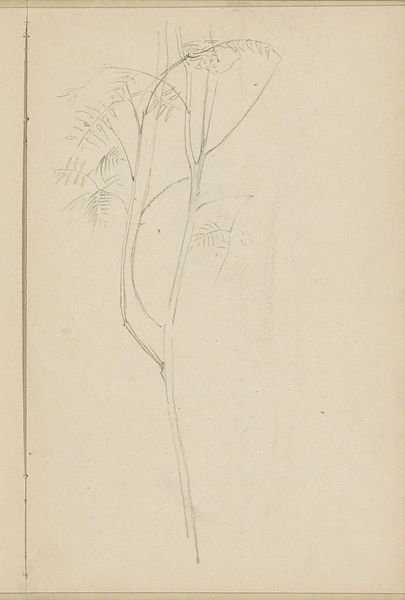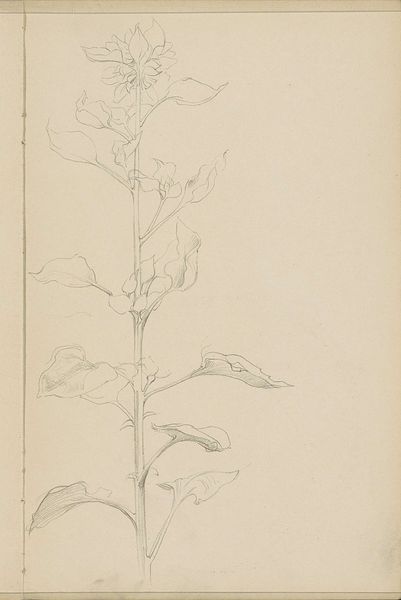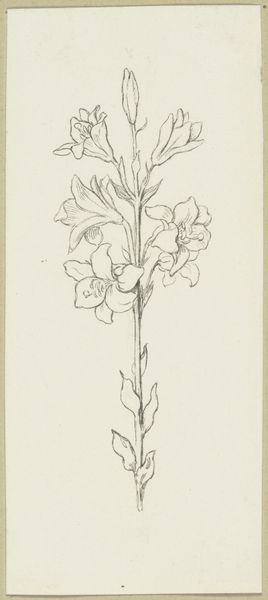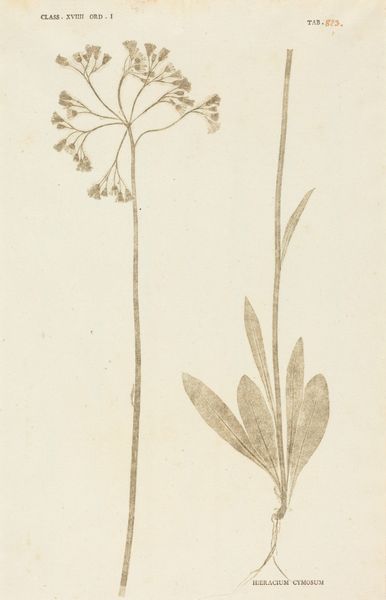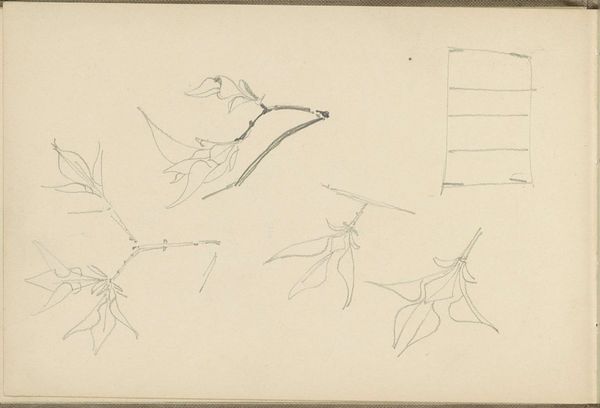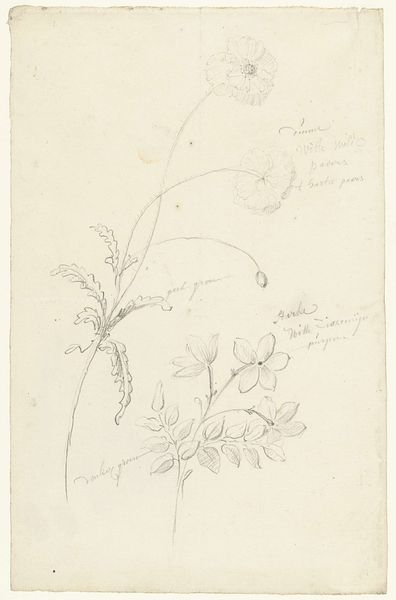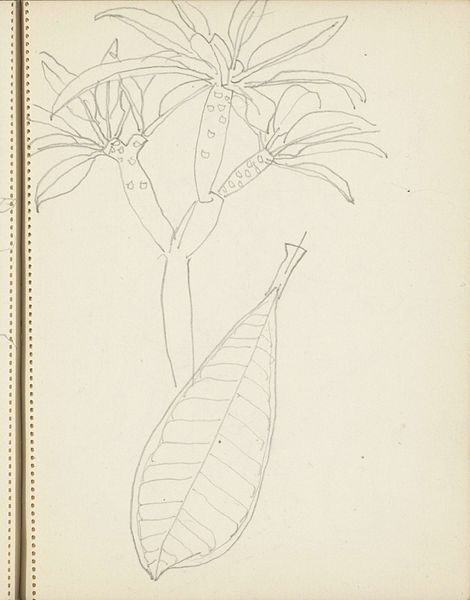
Copyright: Rijks Museum: Open Domain
Curator: This delicate drawing, "Plant, mogelijk een varen" – possibly a fern – comes to us from Antoon Derkinderen, dating from around 1889 to 1894. Executed in pencil on paper, it offers a glimpse into the artist's observational practice. What strikes you initially about it? Editor: There’s a real sense of quiet intimacy. The pale grey lines on the off-white paper make me feel like I’m looking at a half-remembered dream of nature. Curator: Absolutely. This was created during a time of significant change and artistic exploration. Consider the context: late 19th-century Europe, rife with industrial advancement and simultaneously a longing for the natural world. These sentiments find a particular echo with social stratification in class-based depictions of nature in artistic media at this time, and can open discussion about social, political, or gender dimensions in public imagination of nature. Editor: Yes, I see how that yearning might translate onto the page here. But I'm also thinking about the practical side of art production at the time: access to materials, the role of the artist as a recorder of the world around them, almost in a scientific manner. Was this perhaps a preparatory study? Curator: Quite possibly. The nature of such sketches are indeed quite practical while existing as personal explorations. Think of landscape painting as a domain largely dominated by male artists for centuries. Could the decision to study a humble fern, as opposed to a grand oak, indicate a subtle rebellion or critique against that traditional hierarchy? Or even explore male gaze in contrast to organic representation? Editor: That’s a compelling thought! Shifting away from those bombastic depictions toward something far more delicate and overlooked. I imagine this was found inside the artist's notebook. A gentle challenge of norms, captured privately in a personal artifact of that period. Curator: Exactly. It reminds us that even seemingly simple sketches can hold layers of meaning. And these types of pieces have public resonance and can bring up important discussions regarding gender, social status, or environmental contexts from which they arose. Editor: Well, looking at this again, it’s less a simple plant study and more of an quiet, whispered invitation to reconsider what and who gets noticed. Curator: Precisely, and within what power structures such recognitions emerge. Food for thought.
Comments
No comments
Be the first to comment and join the conversation on the ultimate creative platform.
